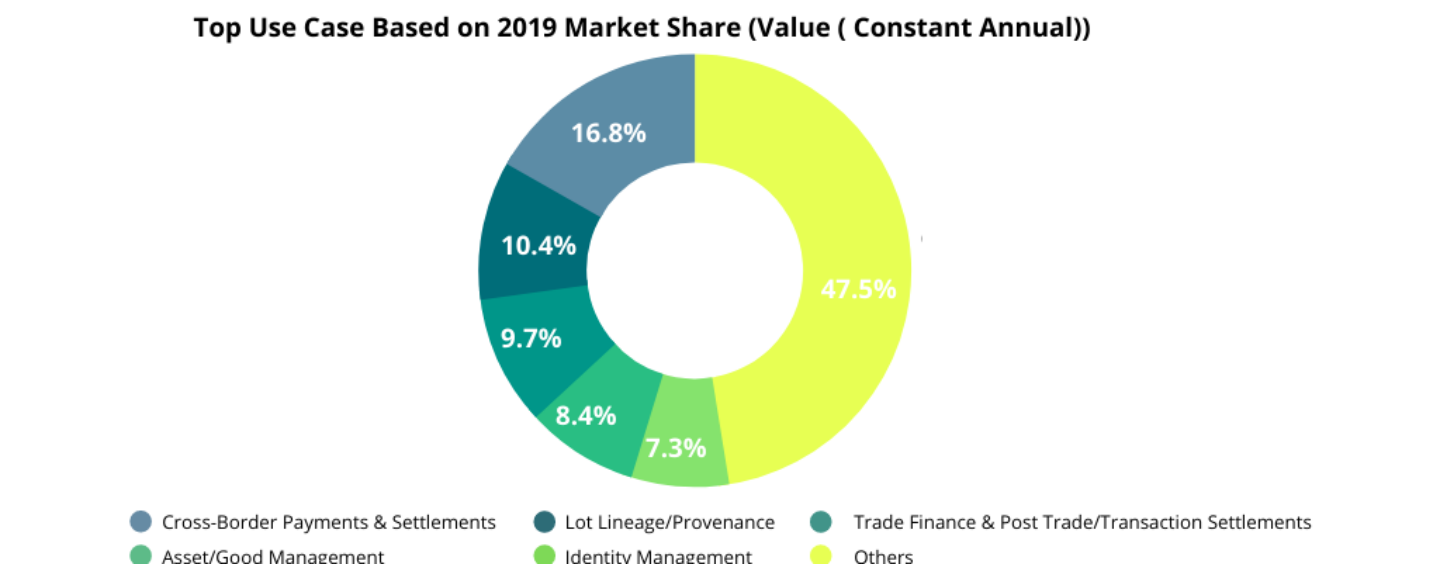
IDC Reports Worldwide Blockchain Spending to Slow Down to US$ 4.3 Billion in 2020
by Fintech News Singapore June 24, 2020According to the April update of the IDC Worldwide Blockchain Spending Guide Worldwide and Asia Pacific blockchain spend will decline in 2020 as compared to the pre-COVID-19 forecast scenario. The report captures data from all Asia Pacific countries except Japan.
This decline is led by marked reductions in IT spend and bleak economic growth in recent months due to the pandemic. Worldwide spending on blockchain solutions is forecast to reach nearly $4.3 billion in 2020 – a tempered 57.7% growth from the $2.7 billion spent in 2019.
While IDC forecasts a drop in blockchain spend in every industry in 2020 due to COVID-19, the scope of these reductions will vary across industries. IDC expects blockchain spending to grow at a tempered pace over the 2018-2023 period with a five-year compound annual growth rate (CAGR) of 55.3% for Asia Pacific and 57.1% for Worldwide – with worldwide spend reaching $14.4 billion by 2023.

Asia Pacific contributes around 19.3% of the overall worldwide spend on blockchain in 2020, and is behind US and Western Europe in terms of total market size. The Asia Pacific market is primarily driven by three use cases that are linked to the BFSI sector: Cross-Border Payments & Settlements, Trade Finance & Post Trade/Transaction Settlements, and Regulatory Compliance.
The drive across various Asia Pacific economies to improve payment methods, and assist in maintaining records for regulatory compliance and checks, continues to be the most dominant mindset that is expected to benefit blockchain investments in the region.
“Despite initial resistance, companies that adopted the technology early on have experienced significant benefits during the early months of the COVID-19 pandemic – better control of their supply chain, better traceability of goods, and the ability to maintain an auditable track record of product movement. Due to this reason, Blockchain technology has turned out to be a saving grace for some enterprises,”
says Ritika Srivastava, Associate Market Analyst at IDC Asia/Pacific.
“The technology has helped enterprises across many industries to overcome the challenges from managing supply chains, medical data verifications, and tracking insurance claims in the Asia/Pacific* region where the adoption is still in its nascent stage. Although there is reluctance to utilize the technology, many of the professional services firms and manufacturing firms will start pushing the implementation of Blockchain technology in the post COVID marketplace,”
add Srivastava.
Hospitality and tourism-heavy industries like transportation and personal and consumer services are expected to be the most negatively impacted markets, along with construction. Blockchain spending is expected to decline by 9.5% or more in the respective industries.
Global blockchain spending will also see moderate decline in the financial sector. While the sector will see an overall slowdown, banking, securities and investment services, and insurance industries are still expected to invest more than $1.6 billion (combined in blockchain solutions) this year. The manufacturing and resources sector, driven by discrete and process manufacturing industries, and the distribution and services sector, led by the retail and professional services industries will also experience significant risk in 2020.
However, the manufacturing and resources sector will see the fastest growth in blockchain spending over the 2018-23 period with a five-year CAGR of 60.5%, followed closely by the distribution and services sector with a CAGR of 58.7%. Despite moderate risk across all industries, blockchain deployments will see modest acceleration in professional services, manufacturing, healthcare, retail, and other industries that require coordination across their value chain.

A similar picture emerges when looking at blockchain spending by use case. Loyalty Programs and Equipment and Service/Parts Management will be the most negatively impacted use cases due to the COVID-19 pandemic. Cross-Border Payments & Settlements, Others, and Lot Lineage/Provenance, on the other hand, are top blockchain use cases that will receive the most investment in 2020. Manufacturing will focus much of its blockchain investment in Lot Lineage/Provenance use cases and Asset/Good Management use cases, while Identity Management use cases will receive significant investments from the Banking, Government, and Healthcare Provider industries.

James Wester
“Like all technology investment, spending on blockchain projects has been affected in the near-term by the impacts of the COVID-19 pandemic. As investment in technology recovers, however, spend on blockchain may return to normal sooner than many legacy technologies,”
says James Wester, Research Director for Worldwide Blockchain Strategies.
“This is due largely to the unique characteristics of blockchain technology such as decentralization, transparency, and redundancy. These are traits that many existing technology approaches in supply chains, healthcare, and financial services lack today – it is the lack of these features that have exposed issues in the way we currently do things such as track foods or distribute pharmaceuticals. Thus, investment in blockchain, with its ability to address these issues, will see continued interest and investment across many industries and applications,”
ends Wester.
From a technology perspective, software will see the largest impact as it holds a moderate share of the blockchain opportunity – with spending expected to decline more than 7% relative to pre-COVID-19 forecasts. IT services and business services will see a more moderate reduction in spending as companies focus on keeping their mission-critical projects going. Hardware has the lowest decrease in 2020 at 6% led by purchases of servers and IaaS.
The United States will still see the largest blockchain spending in 2020, despite a decrease of over 6% in relation to previously published forecasts. Blockchain solutions will experience a slight slowdown in the next largest regions, Western Europe and China, which both saw a decline of over 7% with respect to what IDC predicted in previous forecasts. All nine regions covered in the spending guide are still expected to see double-digit spending growth over the 2018-2023 period led by Central and Eastern Europe and Western Europe with a combined five-year CAGR of over 63%, respectively.
The Worldwide Blockchain Spending Guide quantifies the emerging blockchain market by providing spending data for ten technologies across 19 industries and 18 use cases in nine geographic regions. IDC defines blockchain as a digital, distributed ledger of transactions or records.
The ledger, which stores the information or data, exists across multiple participants in a peer-to-peer network. There is no single, central repository that stores the ledger. Distributed ledgers technology (DLT) allows new transactions to be added to an existing chain of transactions using a secure, digital or cryptographic signature. Spending associated with various cryptocurrencies that utilize blockchain and distributed ledgers technology, such as Bitcoin, is not included in the spending guide. Unlike any other research in the industry, the comprehensive spending guide was designed to help IT decision makers to clearly understand the industry-specific scope and direction of blockchain spending today and over the next five years.







